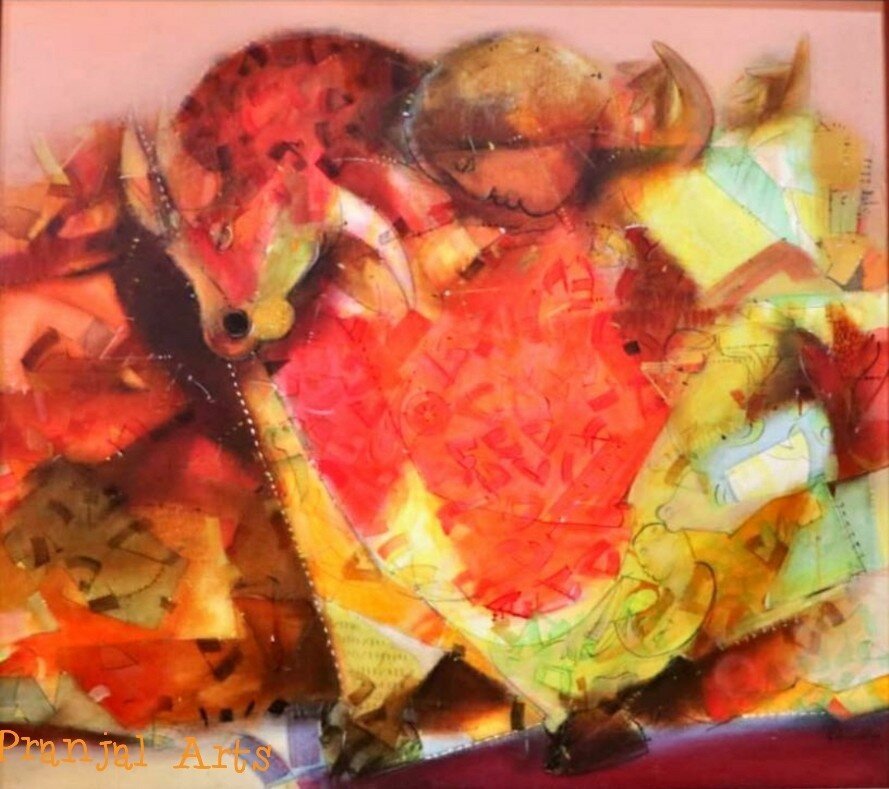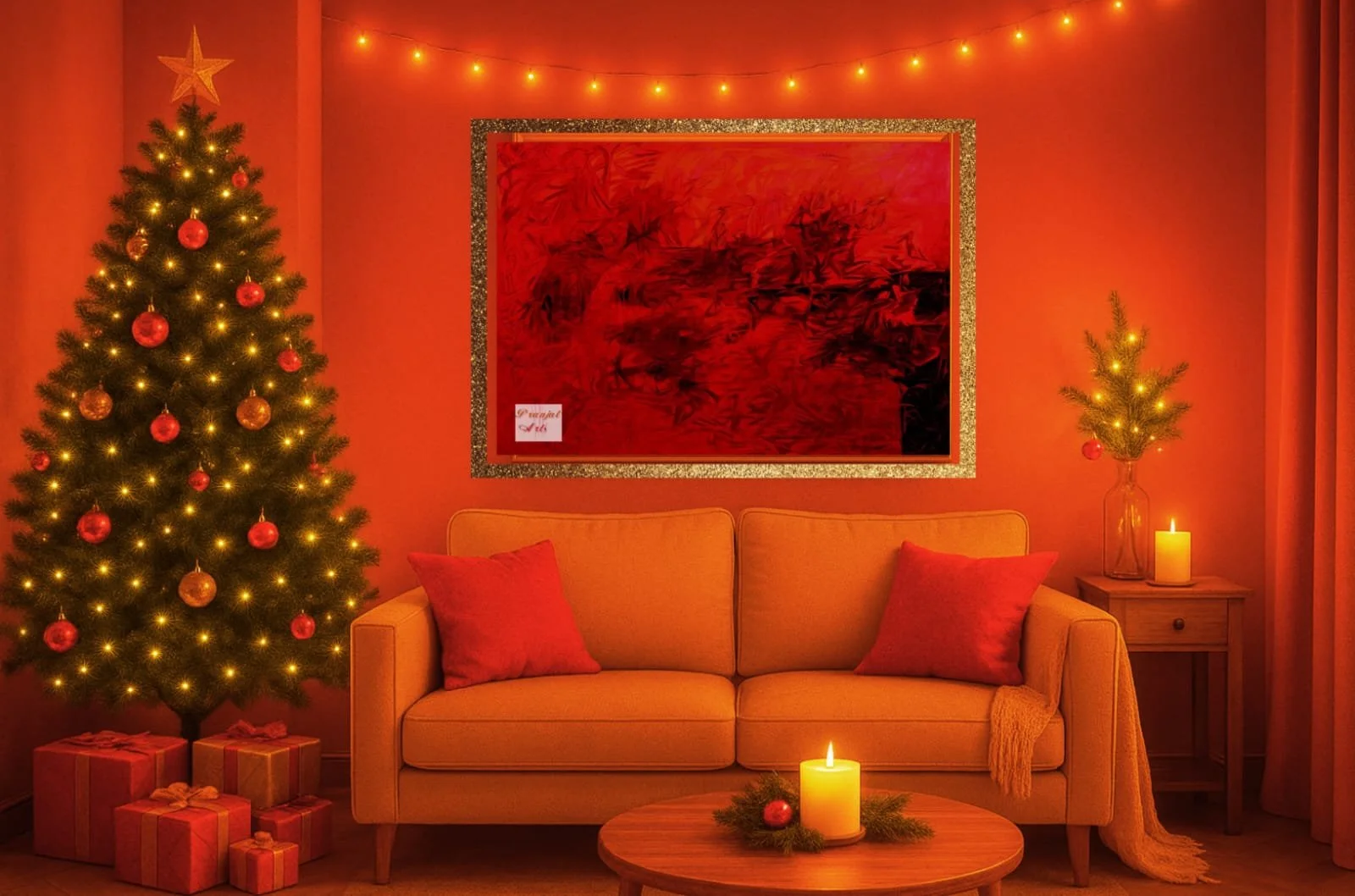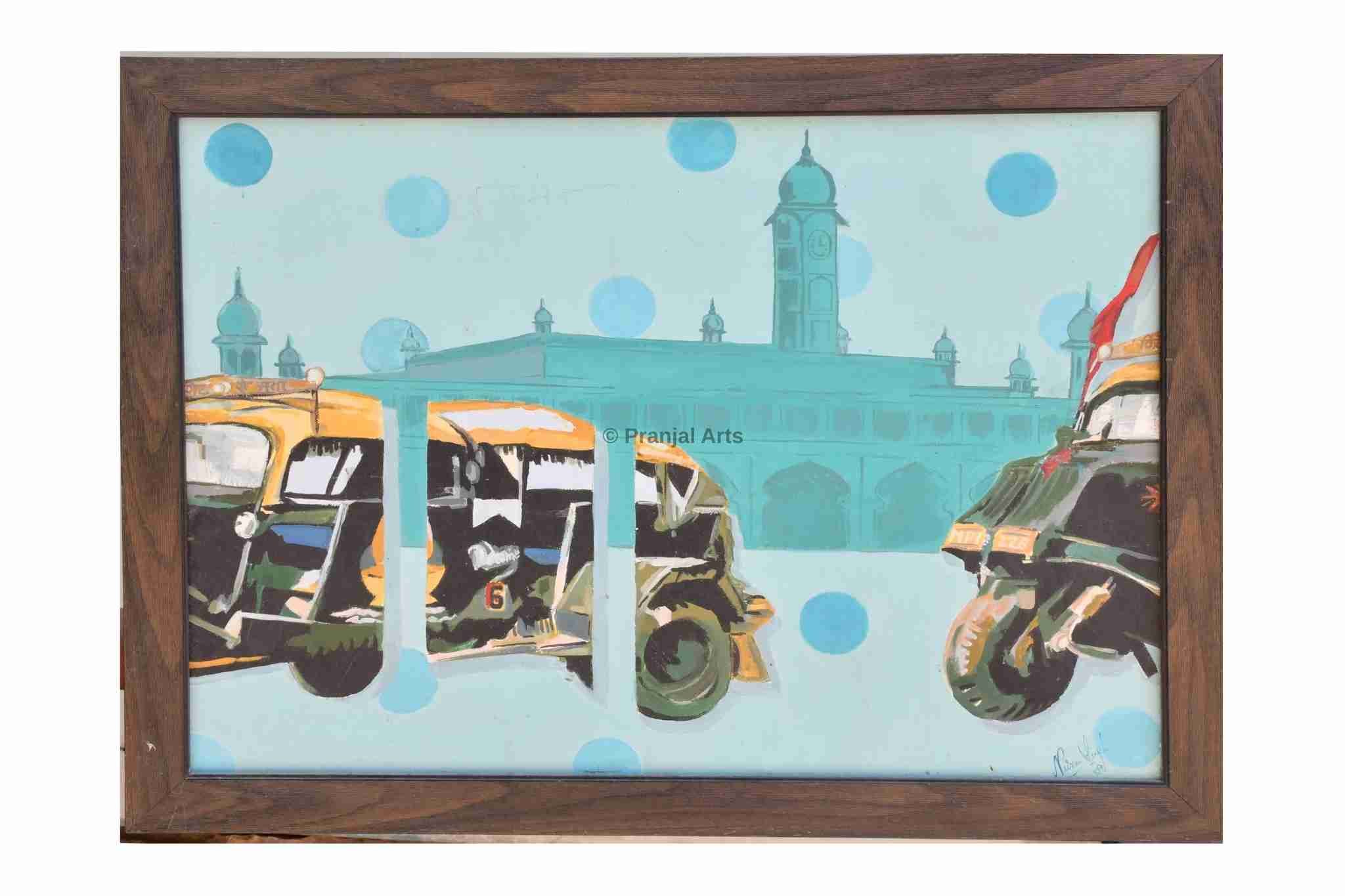Traditional Indian Paintings
India has a rich culture and tradition, which is reflected in its magnificent art and skill. Every area and state in India is associated with a certain art form, from Bihar's Madhubani painting to Gujarat's Pithora painting, Maharashtra's Warli painting to Andhra Pradesh's Kalamkari painting, and Telangana's Gond art to Madhya Pradesh's Gond art. There are numerous Indian folk art styles that have received international recognition and acclaim. Through these art forms, we express our feelings, emotions, and thoughts, as well as admire our surroundings, nature, flora, and fauna, and revere our deities and mythology.
Let's look at some of the different kinds of Indian paintings:
1. Painting by Phad
In the Indian state of Rajasthan, this form of Indian folk painting is done. Phad painting is a religious scroll painting style that is traditionally done on a Phad, which is a long piece of cloth or canvas. Phads portray Rajasthani traditional deities, primarily Pabuji and Devnarayan. The Bhopas, Rajasthan's priest-singers of folk deities, carry and perform in front of a Phad, which serves as a portable temple. It is a narrative scroll painting tradition in which deities and heroes such as Prithviraj Chauhan are shown in mostly red, yellow, and orange colors.
Phad's paintings feature battlegrounds, adventures, romance, and other scenes. The artists employ every inch of the canvas to portray numerous stories at once in these paintings, which are very detailed. The Joshi community was well-versed in the Phad art form. Later on, Shree Lal Joshi, a world-renowned Phad artist, and Padma Shree and Shilpguru award recipient who preserved and modernized the style, founded a school named 'Chitrashala' where anybody could learn and perform it.
2. Painting in Kalamkari
The Kalamkari art form is derived from the terms "Kalam" which means pen and "Kari" which means workmanship. It is done by many families and people in Andhra Pradesh and few communities in Tamil Nadu. Scenes from epics such as the Ramayana and Mahabharata, musical instruments, animals, Buddha and Buddhist art, flowers, and Hindu symbols such as the swastika are commonly depicted in kalamkari. Kalamkari is an ancient Indian folk art style that involves organic hand-printing or block-printing. It has been done for over 3000 years. Natural and earthy colours and vegetable dyes such as indigo, green, rust, black, and mustard are employed in the painting, which is done on fabric with a Kalam or bamboo reed. It's usually done on cotton fabric and takes twenty-three steps to complete. Kalamkari is a popular art style that is extensively utilized on sarees and ethnic apparel.
3. Scrolls of Cheriyal:
The Cheriyal Scroll Painting style is a modified variant of Telangana's Nakashi art. These 40-45 foot scrolls, painted in a narrative manner, primarily represent stories from Indian mythology, Puranas, and Epics. Hand-woven khadi fabric is used to make these Cheriyal Scrolls. The canvas or fabric is treated with a carefully formulated solution and multiple applications are applied so that the canvas stiffens and absorbs color, extending the painting's longevity. The artisans created the colors from natural sources, and the brushes are crafted from squirrel hair linked to a stick. Krishna Leela, Ramayana, Mahabharata, Shiva Puranam, and Markandeya Puranam are some of the most popular topics in Cheriyal paintings. Only a few families in Telangana's Cheriyal village continue to pursue the art form.
4. Rajput Painting:
Around the 17th and 18th centuries, Rajput paintings, also known as Rajasthani paintings, arose and flourished in the Rajputana royal courts of Rajasthan. The Hindu epics Mahabharata and Ramayana, as well as episodes from Hindu mythology, are the principal illustrations. The paintings are intricately detailed and use vibrant colours. Minerals, plant sources, clams and shells, vegetables, and even precious stones are used to create the hues. There was also pure gold and silver utilized. The brushes used are manufactured from squirrel hair and are exceedingly delicate. The preparation of these hues takes weeks and months. These Rajput paintings were usually found on palace walls, fort inner chambers, and Havelis. The Rajput paintings are divided into two styles: Rajasthani and Pahari. The Rajasthani style depicts Rajput courts in Rajasthan, while the Pahari style depicts Rajput courts in the Himalayan foothills.
5. Paintings from Mysore
Mysore paintings, like Tanjore paintings, emerged in the Karnataka city of Mysore and use thin gold leaves. The most prominent themes in these paintings are Hindu gods, deities, and scenes from Hindu mythology. A Mysore painting has a number of steps in its creation. The artist begins by sketching a rough sketch of the picture on the base, using cartridge paper collected on a wooden base. After that, they prepare a 'gesso paste,' which is a mixture of zinc oxide and Arabic gum. On those portions of the paint that require upgrades, the paste is used to create a slightly higher carving effect. After that, the gold foil will adhere to the surface. The rest of the artwork is completed with watercolors. After the paint has completely dried, cover it with thin paper and clean it down with a soft stone. Colors of vegetables and minerals were used by the artists, which were made up of a variety of plant and mineral pigments as well as flowers. Brushes were made from a variety of materials, including squirrel, camel, and goat hair. Grass blades have also been used to draw on sharp lines on occasion. The grace, beauty, and complexity of this art form enthrall many observers.
6. Tanjore Paintings:
Tanjore or Thanjavur painting is a traditional Indian folk art form that originated in the southern Indian town of Thanjavur. It dates back to 1600 AD and is a typical South Indian painting style. These paintings are noted for their use of gold foil, which gives them a surreal appearance, the colorful panel painting done on a wood plank with a deity as the main focus, their use of semi-precious stones, and brilliant hues. Hindu deities, saints, scenes from Hindu Puranas, Sthala-Puranas, and mythological subjects are among the principal themes of Tanjore paintings. These are panel paintings on a wooden plank, thus the name "palagai Padam, which means the “image on a wooden plank”. A fascinating aspect about Tanjore paintings is that the gold leaf used in them retains their luster indefinitely. Tanjore paintings are extremely beautiful and graceful.
Paintings of Patachitra:
Patachitra is a traditional cloth scroll painting art form that originated in the Indian states of Odisha and West Bengal. Mythological and theological themes, epics, Hindu deities, and other subjects are frequently depicted in this art form. Some of the popular themes represented by the Patachitra art form include Thia Badhia – a depiction of Lord Jagannath's temple, Krishna Lila – an enactment of Lord Jagannath as Lord Krishna displays his powers as a child, Dasabatara Patti – Lord Vishnu's ten incarnations, and Panchamukhi – Lord Ganesh's depiction as a five-headed deity. Patachitra is derived from “patta” which means fabric, and Chitra, which means image. Natural and brilliant hues such as white, yellow, and red, as well as black, are used, along with bold and powerful outlines and ornate borders. Mohapatras are the artists who create this art style, which has been practiced for over 3000 years. Raghunath Mohapatra was a well-known Patachitra artist who was also honored with some of India's highest civilian honors.
India's brilliant art and craftsmanship represent the country's rich cultural variety. Paintings from many places, each symbolizing tradition, customs, and philosophies, are passed down from generation to generation. Despite the overlapping themes of mythology and nature, each of these paintings has its own beauty and flair. These art forms, which are all made with natural dyes and colours, will take you back in time and leave you in awe of their rustic appeal.













